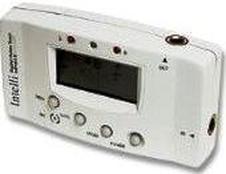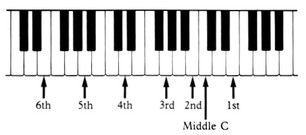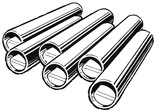How to Tune a GuitarThere are a number of ways to learn how to tune a guitar. The quickest and most accurate way to tune is with an electronic tuner.
Tuning your guitar with an electronic tuner Electronic tuners are small battery-run devices with a dial that indicates whether or not your guitar is in tune. |
|
You can purchase an electronic tuner at most music shops. They cost around $30 to $40.
There are two types of tuner. One is called a chromatic tuner which senses every possible musical note. The other type is one that is especially designed for a guitar. It senses just the six notes of the open strings of the guitar (E, A, D, G, B and E.) I recommend this type for beginners. |


